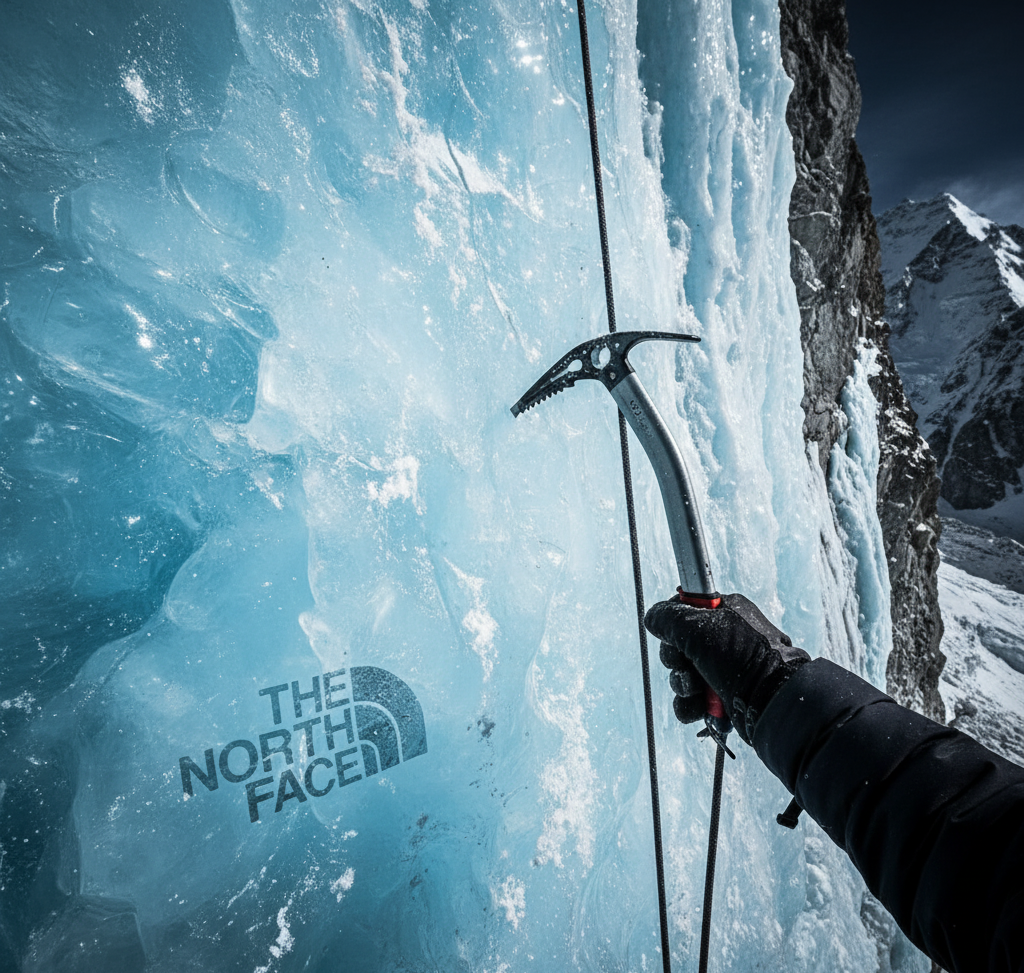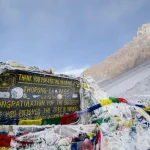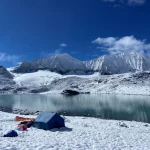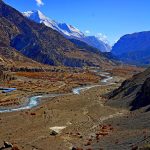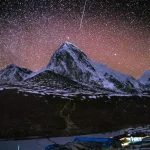Mount Everest, known as Sagarmatha in Nepali and Chomolungma in Tibetan, stands as the highest point on Earth, towering at 8,848.86 meters (29,031.7 feet). While the southern route from Nepal garners more attention, the North Face of Mount Everest offers a unique and challenging ascent that attracts seasoned climbers seeking a more technical and less crowded path to the summit.
What Is the North Face of Mount Everest?
The North Face refers to the steep, rugged side of Everest that rises from the Tibetan Plateau in China’s Tibet Autonomous Region. Unlike the southern route, which is more frequented and accessible, the northern approach presents a more isolated and technically demanding climb. The journey begins at Rongbuk Base Camp, situated at approximately 5,150 meters (16,896 feet), and climbers ascend through various camps, including Advanced Base Camp (ABC), before reaching the summit.
Key Climbing Routes on the North Face
Several notable routes have been established on the North Face, each with its own set of challenges and historical significance:
Northeast Ridge Route
This is the most commonly used route on the North Face, following the path taken by the 1924 British expedition. It involves ascending the Northeast Ridge, navigating through the Three Pinnacles, and passing the Three Steps before reaching the summit.
Norton Couloir
A direct line that ascends the Norton Couloir, a steep and narrow gully. This route is known for its technical difficulty and has been attempted by various climbers over the years.
Hornbein Couloir
First ascended in 1963, this route involves traversing from the West Ridge to the North Face via the Hornbein Couloir, a steep and exposed passage. It is considered one of the most challenging routes on Everest.
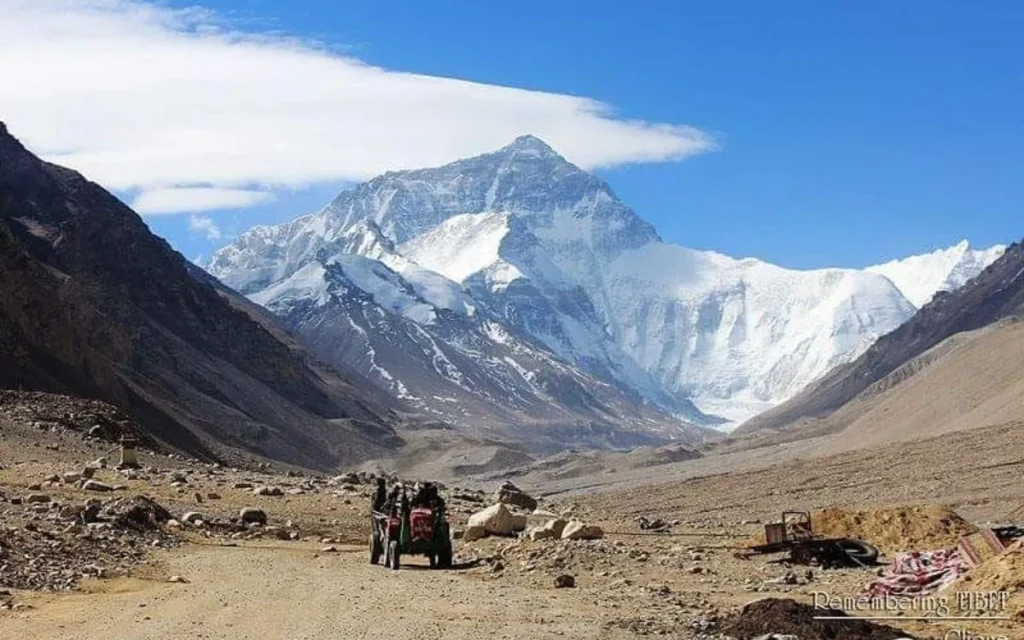
Historical Significance and First Ascents
The North Face has a rich history of exploration and ascent:
- 1921 British Expedition: The first recorded attempt to climb Everest from the north was made by a British team in 1921. They reached the North Col, setting the stage for future expeditions.
- 1960 Chinese Expedition: A Chinese team led by Wang Fuzhou made the first successful ascent of Everest from the north, reaching the summit on May 24, 1960.
- 1963 American Expedition: Climbers Tom Hornbein and Willi Unsoeld made the first ascent of the Hornbein Couloir, traversing from the West Ridge to the North Face, showcasing remarkable mountaineering skills.
Challenges and Dangers of the North Face
Climbing the North Face presents numerous challenges:
- Technical Difficulty: The steep rock faces and icy ridges require advanced climbing skills and experience.
- Altitude and Weather: The high altitude and unpredictable weather conditions increase the risk of altitude sickness, frostbite, and exhaustion.
- Avalanche and Rockfall: The steep terrain and unstable snow conditions make climbers susceptible to avalanches and rockfalls.
- Limited Rescue Options: The remote location and steep slopes make rescue operations challenging, emphasizing the importance of self-sufficiency.
The Role of Sherpas in North Face Expeditions
Sherpas play a crucial role in Everest expeditions, providing guidance, support, and expertise:
- Guides and Support: Sherpas assist climbers in navigating the challenging terrain, setting up camps, and carrying equipment.
- Cultural Knowledge: Their deep understanding of the mountain’s spiritual significance and their experience in high-altitude climbing are invaluable assets.
- Safety Measures: Sherpas are instrumental in ensuring the safety of the expedition, often leading the way and setting up ropes and ladders in dangerous sections.
Logistics and Planning for a North Face Expedition
Planning an expedition on the North Face requires meticulous preparation:
- Permits and Regulations: Climbers must obtain permits from the China Tibet Mountaineering Association and comply with regulations set by the Chinese government.
- Acclimatization: Due to the high altitude, climbers must spend several weeks acclimatizing at various camps to reduce the risk of altitude sickness.
- Equipment: Essential gear includes high-altitude clothing, climbing tools, tents, oxygen systems, and communication devices.
- Logistics Support: Teams often rely on experienced expedition companies to handle logistics, including transportation, base camp setup, and supply management.

Environmental Considerations and Conservation Efforts
Climbing the North Face has environmental implications:
- Waste Management: Climbers are required to bring down all waste, including human waste, to minimize environmental impact.
- Cleanup Initiatives: Organizations and governments have initiated cleanup campaigns to remove trash and debris from the mountain.
- Sustainable Practices: There is a growing emphasis on sustainable climbing practices to preserve the pristine environment of Everest.
Comparing the North Face to the South Side
| Aspect | North Face (Tibet) | South Side (Nepal) |
|---|---|---|
| Access | Requires permits from China Tibet Mountaineering Association | Requires permits from Nepal Tourism Board |
| Route Difficulty | More technical and challenging | Less technical, more accessible |
| Crowd Levels | Fewer climbers, more solitude | Higher number of climbers |
| Rescue Options | Limited due to remote location | Helicopter evacuation available up to Camp 2 |
| Cultural Experience | Tibetan culture and traditions | Sherpa culture and traditions |
Notable Climbers and Expeditions
Several climbers have made significant contributions to the exploration of the North Face:
- Marco Siffredi: A French snowboarder who attempted to descend the Hornbein Couloir in 2002 but tragically disappeared during the descent.
- Dawa Yangzum Sherpa: A prominent Sherpa climber who has contributed to various Everest expeditions, showcasing the vital role of Sherpas in high-altitude climbs.
Planning Your North Face Expedition with Nepal Adventure Trail
If you’re considering an expedition on the North Face of Mount Everest, partnering with a reputable expedition company is crucial. Nepal Adventure Trail offers comprehensive services for climbers, including:
- Permitting and Documentation: Assistance with obtaining necessary permits and handling bureaucratic procedures.
- Logistics Management: Coordination of transportation, base camp setup, and supply management.
- Experienced Guides and Sherpas: Provision of skilled guides and Sherpas to ensure safety and success.
- Customized Itineraries: Tailored expedition plans to suit individual needs and preferences.
Conclusion
Climbing the North Face of Mount Everest is a formidable challenge that requires advanced mountaineering skills, meticulous planning, and a deep respect for the mountain’s cultural and environmental significance. By choosing a reputable expedition company like Nepal Adventure Trail, climbers can ensure a safer and more successful journey to the summit of the world’s tallest mountain.
